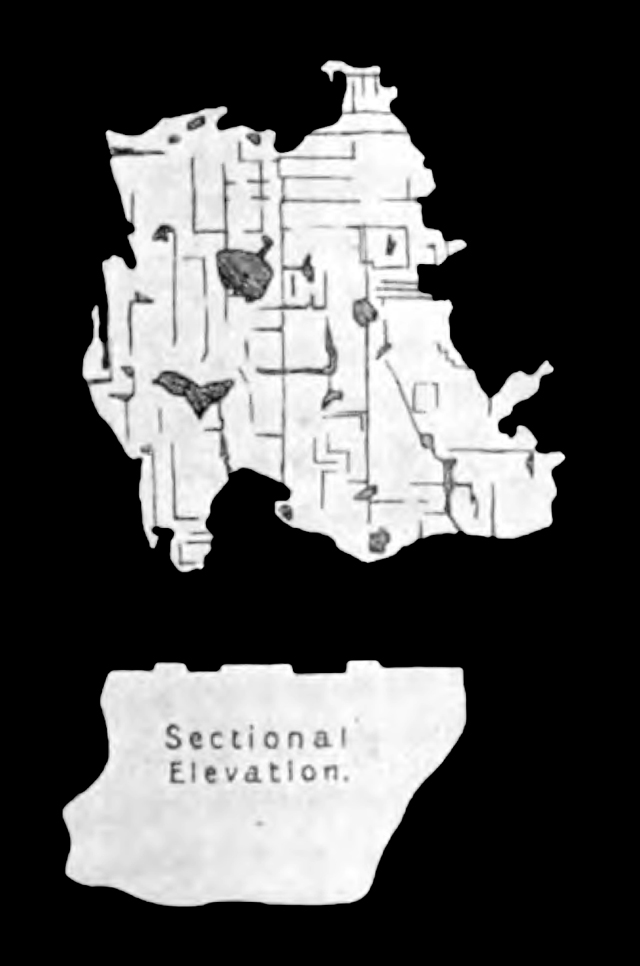cleavage plane theory / hieroglyphs

*
Plate 28, Fig. 15
Crystal of brittle wrought iron.
illustrating John Oliver Arnold (1858-1930). "Factors of Safety in Marine Engineering." Transactions of the Royal Institution of Naval Architects 1 (1908) : 260-282, discussion 283-289
University of Michigan copy, digitized July 17, 2007
Since enunciating the cleavage plane theory the author has been fortunately able to prove experimentally that a crystal of wrought iron can develop absolutely perfect mineral cleavage, parallel to the faces of the cube. Mr. Vaughn Pendred sent to him a wrought iron bolt, which, after being in use for 30 years under practically no stress, fractured with a few taps from a hand hammer. On microscopically examining the fractured face, a crystal was discovered showing perfect mineral "step" cleavage. This crystal is represented in Fig. 15 (Plate XXVIII.).
p 278
Oliver was Professor of Metallurgy, Sheffield University. Expert in high-speed steels; "discovered the influence of vanadium on steel," later substituted molybdenum for tungsten (*).
Three portraits at NPG.
—
No dreams, he tells himself, but function.
— Georgina Harding. The Solitude of Thomas Cave (2007)
*
Iron may sleep; its crystals have other ideas.
16 February 2014
tags: J. O. Arnold; Georgina Harding; Thomas Cave; cartography; cleavage plane theory; dreams; hieroglyphs; maps; metallurgy